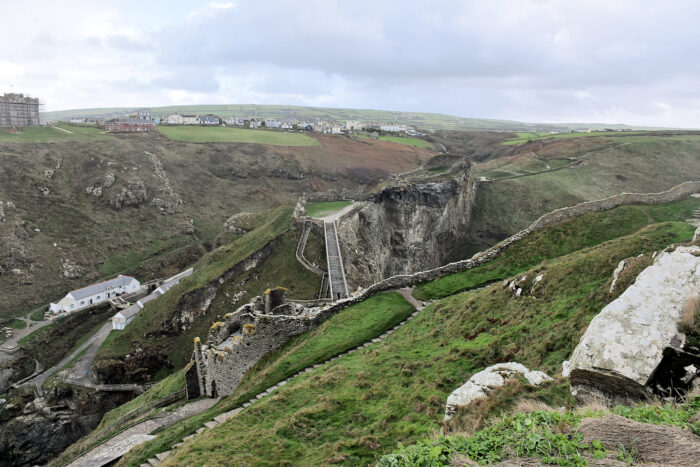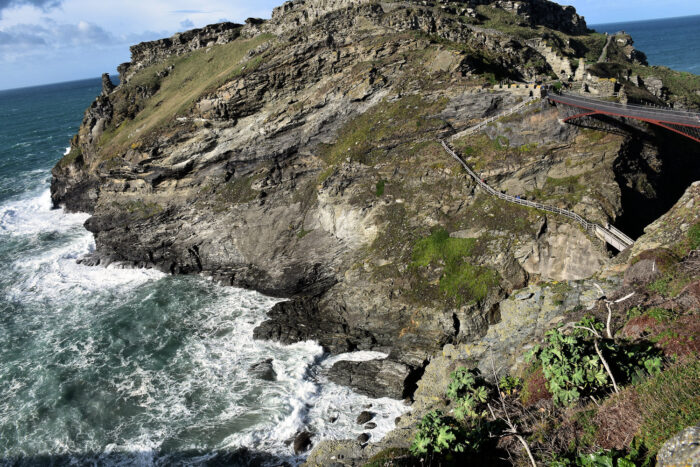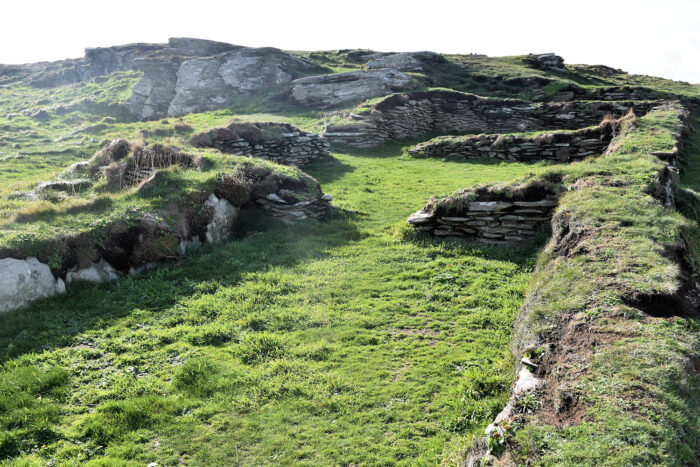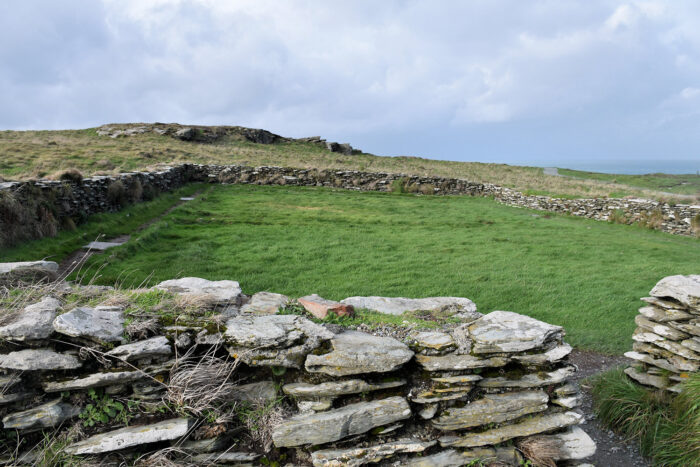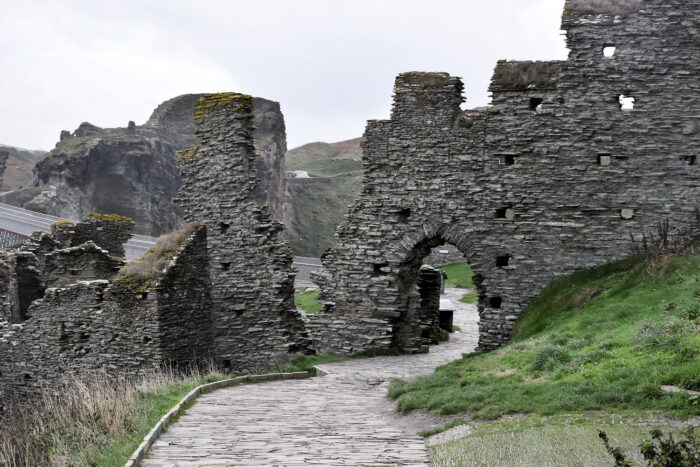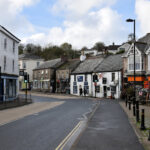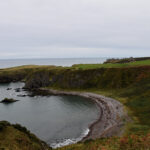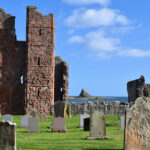This is Tintagel. Do you know the story?”
Back in about 1135 a guy by the name of Geoffrey of Monmouth wrote a book called “The History of the Kings of Britain” and he included a story about a wizard who magicked a king so he could sneak into the castle of the duke he was at war with and have it off with his wife. Then almost a century later, the castle was built by the Earl of Cornwall.
After his death, no one really lived here, other than caretakers. It’s a giant folly. Also over time, bits of it have fallen into the sea.
In 1337 the buildings were in a ruinous state, a part of them joining the work on the mainland to that on the island having fallen into the sea : the drawbridge fell in the sixteenth century.
“The castles of England, their story and structure”, James MacKenzie, 1896
In the background is the village of Tintagel (which was Trevena until according to an English Heritage panel “by about 1900, the village had changed its name . . . making the most of its association with the famous castle”, due to the increased interest in King Arthur in the 19th century.) On the far left is the hotel, unfortunately covered in scaffolding, which was built in 1899 and is an interesting mixture of elaborate late-Victorian decor and worn 1940s furnishings. It’s quirky and comfortable.) The castle is in the middle there, with the mainland section (towards the rear) and the “island” section connected by a bridge.
The “island” (you can see the connecting bridge and some of the ruins to the right).
There’s substantial evidence (read: artefacts recovered) of an Iron Age and earlier settlement on the headland but apparently nothing above ground. What is there are a large number of stone walls that according to the English Heritage panels, they “do not know the date of these structures but they probably formed part of the Dark Age settlement.” By “Dark Age settlement”* they mean immediate post-Roman period, the 5-6th centuries, when Tintagel was believe to be a major settlement for the kingdom of Dummonia.
*I’d suggest not using the term Dark Age/s around archaeologists, historians or medievalist who have an interest in that period. It was used to refer to the time after the collapse of the Roman empire/early Middle Age because it was believed the (European) society went backwards, people were ignorant, knowledge and technological development faltered and was lost. Which is all demonstrably false. Some people still use the term to refer to our lack of knowledge of the era, but the negative connotations are still there and, for that matter, propagated through popular culture.
From the nearby panel:
This walled garden was probably built in the 1230s and may have been part of a romantic literary landscape. Gardening was taken up enthusiastically by English royalty in the 13th century. This garden is in a particularly exposed position where few plants would have survived the winter but it may have been transformed with temporary planting during visits by Earl Richard.
At this time, Tintagel was famous not only as the place where King Arthur was conceived, but also as King Mark of Cornwall’s castle, the location of the popular love story of Tristan and Iseult. Earl Richard may have created the settings from this tale at Tintagel; the cliff-top chapel from which Tristan makes his escape, the garden where the couple meet and the ‘cave of lovers’ where the pair take refuge, are all represented.
Someone was keen on enough on the idea to have part of the story carved into pavers that are places around the perimeter of the garden.
The entrance to the castle from the headland.
